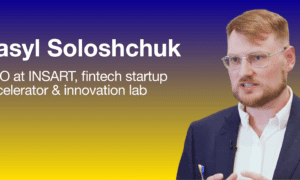This is an interview with Alexander De Ridder, Co-Founder & CTO, SmythOS.com
Can you introduce yourself and share your background in tech, particularly in AI and automation?
I’m Alexander De Ridder, and I’ve spent over 15 years exploring how machines can make human work more meaningful. My path started in Belgium, where I taught myself to code at 13. By 2008, I was working on an early AI-driven ad system for mall kiosks that adapted content based on who was standing nearby. The project sparked a lifelong curiosity about real-world intelligence. Later, I turned that curiosity toward search and language, launching several ventures that applied machine learning to help people create, discover, and connect online. Today, I’m focused on building collaborative AI systems—a network of specialized agents that automate complex tasks. For me, AI has always been about freeing them to do what only humans can.
What inspired you to focus on AI agent building, and how has your journey in this field evolved over time?
The real turning point came in January 2023, when we first proved that AI models could call external tools, beyond generating text. I still remember the moment: we connected an LLM to trigger real-time data fetches and perform dynamic tasks. It was the first time AI felt genuinely useful in motion. That proof-of-concept showed us that agents could go beyond scripted chat, actually doing work by tapping APIs, running commands, and adapting in real time. By the time GPT-4 launched in March 2023, it became clear the entire playing field had changed, and models had become intelligent hands. That realization led us to fully pivot SmythOS (then INK) from a content-tool company to a multi-agent orchestration platform. Today, our system coordinates specialized agents. One calls tools and APIs, another validates data, and another crafts output. They all work together under a unified orchestration layer.
You’ve mentioned the importance of AI orchestration and multi-agent systems. Can you provide a real-world example of how this technology has transformed a business process?
One clear example is in our sales and marketing operations. We introduced AI agents at key points in the funnel. Some repurposed blog posts into social snippets, others follow up on leads with personalized content, and a few handle initial inquiries automatically. What used to require constant coordination across multiple teams now runs on autopilot, with humans focusing on strategy rather than logistics. That shift alone cut about $20,000 in manual workload per month and tripled our content output. We saw a similar transformation with an enterprise client in e-commerce. They began with a single agent for order-status queries, then expanded to cover FAQs and internal reporting. Before they knew it, they had fewer customer service tickets, faster responses, and happier customers.
In your experience, what’s the biggest challenge startups face when implementing AI agents, and how can they overcome it?
Startups assume the challenge lies in building or integrating AI agents. However, more often, the friction is evident in how teams respond. Without a clear strategy, AI can feel like noise. Often, it’s a scattered experiment here, an overreach there, and suddenly the organization is skeptical. The key is to start small, with a bottleneck that AI can solve measurably. From there, infuse the agents into existing workflows rather than forcing new ones, and invest early in team education. When people understand how the tool makes their job easier, adoption becomes momentum.
You’ve advocated for ‘automating decision-making’ rather than just tasks. Can you walk us through a specific instance where this approach significantly improved efficiency in your startup?
One standout example was how we reimagined lead scoring. Previously, our marketing team would manually sift through leads. We even tried to predict which ones were worth pursuing. Turns out, it was a slow, subjective process that often missed the mark. So, we shifted the approach entirely by letting AI agents handle the decision itself. These agents evaluated engagement signals, firmographics, and funnel behavior in real-time, then ranked leads for the sales team based on likelihood to convert. The result was shocking. Conversions rose by 15%, and our team’s productivity jumped by a quarter. But the deeper win was strategic focus because our sales team stopped guessing. They acted on a prioritized list that updated around the clock.
How do you see the role of human oversight evolving as AI agents become more autonomous? Can you share an example from your work at SmythOS?
As AI agents take on more autonomy, human oversight is shifting from direct control to strategic supervision. It’s less about micromanaging each task and more about shaping the rules, monitoring performance, and stepping in when something falls outside the expected bounds. At SmythOS, one of the clearest examples is our security monitoring system. We use AI agents to scan API traffic and user behavior for signs of fraud or anomalies. The agents can even suspend suspicious access automatically. But every action they take is logged and reviewed by a human analyst. If the agent flagged a false positive or overreached, we adjust its parameters accordingly. This creates a feedback loop: AI handles the volume, while humans handle the edge cases and judgment. It’s a governance model that scales with confidence and keeps accountability in human hands where it matters most.
You’ve mentioned using AI agent pairs for processes like customer support. How do you ensure these systems maintain a human touch in customer interactions?
Maintaining a human touch starts with knowing where automation helps and where it shouldn’t overreach. So, we built in clear hand-off paths. If the AI couldn’t confidently help or sense frustration, a human stepped in instantly, with full context. However, it goes deeper than just “human in the loop.” We built a system where agents also supervise agents, with humans stepping in only when necessary. We trained our support agents on real transcripts so they speak in our brand’s voice: warm and conversational, never robotic. If an agent picks up uncertainty or detects customer frustration, it immediately escalates to a human. The best part is that it passes along full context, so no one starts from scratch. Meanwhile, other agents monitor the AI’s interactions, flagging any patterns, like repeated misunderstandings or tone drift, for human review. In practice, that agent-level oversight ensures consistency and empathy, while humans focus their time on complex or emotional cases. This layered approach keeps support fast, reliable, and always guided by real people.
Given your experience, what’s one unconventional piece of advice you’d give to startup founders looking to leverage AI in their operations?
The biggest mistake I see is founders thinking AI adoption is just about installing software. In reality, adopting AI changes how people work, think, and make decisions. When we began integrating AI agents, we didn’t aim for full automation from day one. Instead, we mapped the highest-impact processes and focused on small wins like tasks where automation could deliver visible value quickly. That created momentum.
We also kept AI inside familiar workflows. Rather than introduce yet another dashboard, we integrated agents directly into the systems our teams already used. That reduced friction and made AI feel like a helpful layer. Most importantly, we invested in training, created internal champions, and treated onboarding like change management. If your team understands how AI helps them, they’ll embrace it.
Looking ahead, what potential ethical considerations do you foresee with widespread AI agent adoption, and how is SmythOS addressing these?
As AI agents become more embedded in decision-making, the ethical stakes rise, especially around privacy, consent, bias, and accountability. These systems often operate behind the scenes, which makes transparency even more critical. The risks around bias, privacy, and accountability become real with agents making decisions autonomously. Hence, they demand systems that are transparent, controlled, and safe by design. That’s why SmythOS built constrained alignment into the core of our platform.
Every agent runs inside a sandboxed environment, with clearly defined boundaries. There are clear boundaries as to what data they can access, which external tools they can call, and which actions require approval. We also layer in audit trails and explainability. That way, every decision can be traced and understood, and changes to agent behavior are logged.
But we go further: we introduced agent supervision, where one AI agent monitors another’s actions for anomalies or policy drift. They flag issues before humans are even alerted. Then we empower clients with role-based permissions. Also, deployment flexibility agents run in private environments, behind firewalls, or in public clouds with full control over encryption and data flow. It’s an ethics-first design because autonomy without oversight is unsafe. SmythOS systems are designed to be powerful and governable, so organizations can scale confidently, without compromising trust or compliance.
Thanks for sharing your knowledge and expertise. Is there anything else you’d like to add?
Only this: AI is moving faster than most people expect, but the real question isn’t just what it can do, it’s why we’re using it. For me, it’s about unlocking human potential. It’s also about keeping the internet of agents open for all humanity. By open-sourcing, we are contributing to a future we want to live in. As we build more capable agents, the responsibility grows, too. If we keep people at the center, I think we’ll look back and see this era as the start of something deeply empowering. I’m grateful to be building in this moment, and even more grateful that the conversation is shifting toward impact, trust, and shared benefit.

































